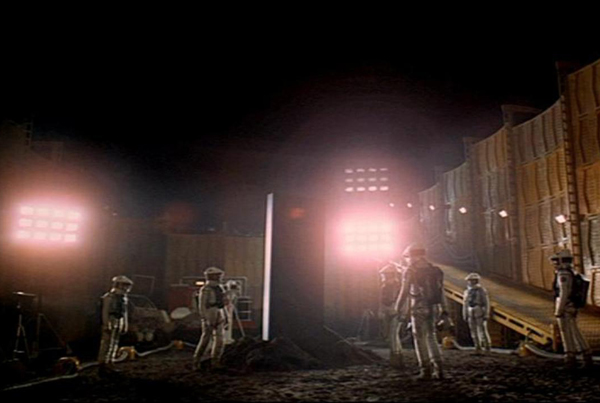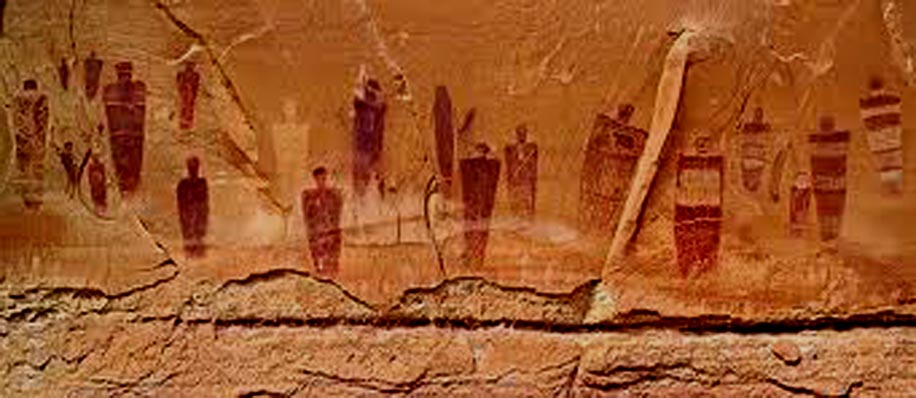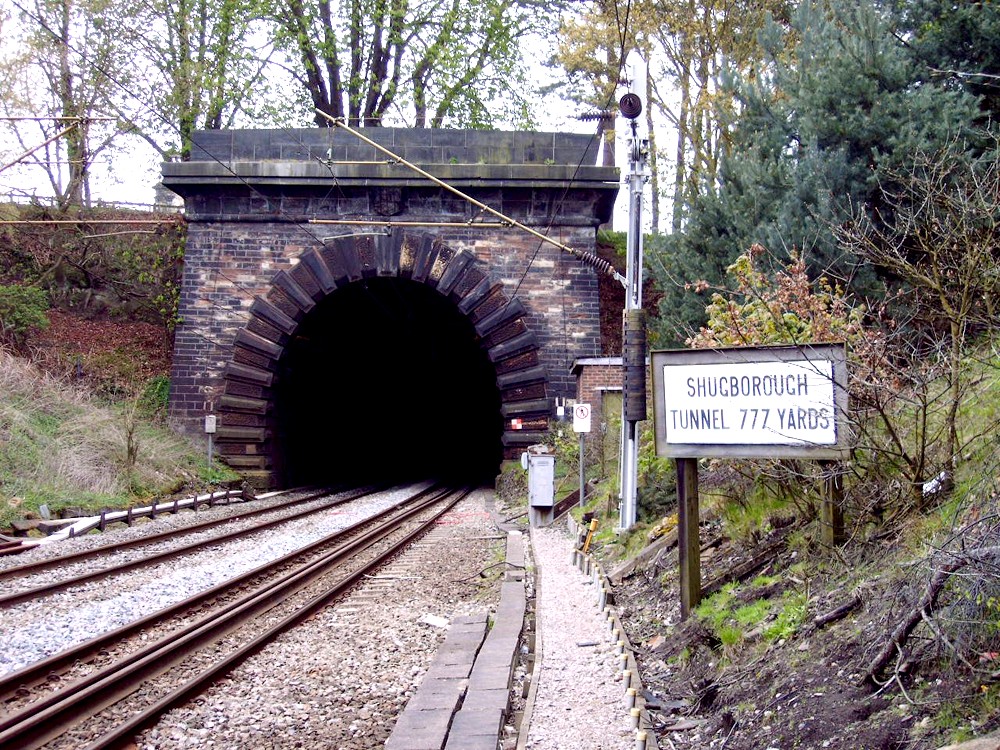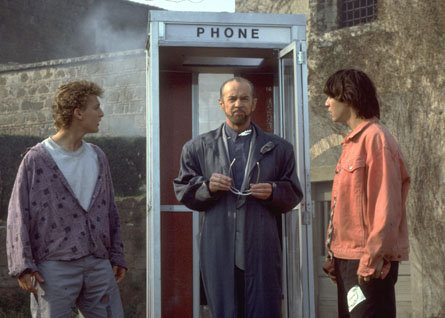It looks like you're using an Ad Blocker.
Please white-list or disable AboveTopSecret.com in your ad-blocking tool.
Thank you.
Some features of ATS will be disabled while you continue to use an ad-blocker.
share:
a reply to: The GUT
Exactly, and it's that sort of economic transaction that will most likely not be part of whatever digs us out of our mess and takes us to the stars.
There won't be any Gimpers, Gimps or The Gimped. I kinda think Gimps and The Gimped are the same thing, but you know what I mean.
Sometimes you're the Gimp, sometimes you get gimped.
Exactly, and it's that sort of economic transaction that will most likely not be part of whatever digs us out of our mess and takes us to the stars.
There won't be any Gimpers, Gimps or The Gimped. I kinda think Gimps and The Gimped are the same thing, but you know what I mean.
a reply to: Baddogma
I am not sure how to feel on this one.
There was another soon after that left me no doubt though, that threads author in another person's thread had already said they wanted to write a book and make a movie, not only that but I quite easily found the canadian company and the Gov contract to build an underground water facility on Navajo land during the year mentioned by the OP. it even had all the "oddities" the expanding foam and all details in the outline of the project.
This one I maybe feel sympathy for because of the poor response to the attempt at posting a the fiction.
I am a reader, when I was 11 I read in a short time a set of 24 volumes each 4" and larger thick of the collected works of the worlds greatest authors. I didn't understand everything I read but I had to read every last story! I have read 4-7 books a week most of my life both fiction and non always keeping a healthy mix, once when I was unable to get books I read the dictionary and read through the set of encyclopedias, the New Merck Manual and of course the Bible several times...trying to understand what I read, fiction and sci-fi are favorites and I liked the short story very much.
Fooling so many people is the work of a sociopath
I am not sure how to feel on this one.
There was another soon after that left me no doubt though, that threads author in another person's thread had already said they wanted to write a book and make a movie, not only that but I quite easily found the canadian company and the Gov contract to build an underground water facility on Navajo land during the year mentioned by the OP. it even had all the "oddities" the expanding foam and all details in the outline of the project.
This one I maybe feel sympathy for because of the poor response to the attempt at posting a the fiction.
I am a reader, when I was 11 I read in a short time a set of 24 volumes each 4" and larger thick of the collected works of the worlds greatest authors. I didn't understand everything I read but I had to read every last story! I have read 4-7 books a week most of my life both fiction and non always keeping a healthy mix, once when I was unable to get books I read the dictionary and read through the set of encyclopedias, the New Merck Manual and of course the Bible several times...trying to understand what I read, fiction and sci-fi are favorites and I liked the short story very much.
a reply to: Bybyots
The inbred, gibbering, hairy beast kept in the secret room at the royal family estate?... a metaphor for what we hate when we look into a mirror or other people's eyes (that are really our own... or superimposed as our own... not in any woo sense, but in a psychological sense... sigh, I'm attempting to be more clear in my posts lately and it's turning into a showcase for undiagnosed OCD).
But returning to your points, Byby... uhm... well ... agreed, heh.
As far as my railing against elitism (I bring this up again because my post was ...flawed), people range in abilities and mental hardware and time put in to gain expertise... but whether it's a company with too large a pay gap, the population of humans at large, or a population with a splinter group ready to part ways... we are less individuals than a brotherhood of humanity, and I'd be more impressed with anyone's view and tech IF they held that credo as most important... cause it is, imo.
As you jokingly alluded to and I clumsily posited, these (alleged) folks, smart and more idealistic than the average bear, are still, ultimately flawed and human... and as such, have no more right to escape this prison camp than anyone else... but i'm glad someone did, and IF (always IF) they did, I'd hope they'd find a way to eventually free their fellows... or die trying. That would point to true moral advancement.
The inbred, gibbering, hairy beast kept in the secret room at the royal family estate?... a metaphor for what we hate when we look into a mirror or other people's eyes (that are really our own... or superimposed as our own... not in any woo sense, but in a psychological sense... sigh, I'm attempting to be more clear in my posts lately and it's turning into a showcase for undiagnosed OCD).
But returning to your points, Byby... uhm... well ... agreed, heh.
As far as my railing against elitism (I bring this up again because my post was ...flawed), people range in abilities and mental hardware and time put in to gain expertise... but whether it's a company with too large a pay gap, the population of humans at large, or a population with a splinter group ready to part ways... we are less individuals than a brotherhood of humanity, and I'd be more impressed with anyone's view and tech IF they held that credo as most important... cause it is, imo.
As you jokingly alluded to and I clumsily posited, these (alleged) folks, smart and more idealistic than the average bear, are still, ultimately flawed and human... and as such, have no more right to escape this prison camp than anyone else... but i'm glad someone did, and IF (always IF) they did, I'd hope they'd find a way to eventually free their fellows... or die trying. That would point to true moral advancement.
All I learned was penises, nukes that look like penises, quantum clones, and how we are F*** ourselves out of existence, or back to the stone age.
O, and ancient Rome used to have idols with a giant penis, over there door, before the belief of christ.
Like a horseshoe.
O, and ancient Rome used to have idols with a giant penis, over there door, before the belief of christ.
Like a horseshoe.
edit on 3-8-2014 by Specimen because: (no reason given)
Well what's this?
I'll bite. Looks like it's time for Tor!
ForeverMen and BlackTriangle Truth?
"^^ sounds like someone reads articles on the deepnet too much".
I'll bite. Looks like it's time for Tor!
a reply to: Baddogma
I think about this sort of thing a lot.
Writing fiction is a bit of a game, I have found. I think that there are a lot of people here that write stuff on the web because it's a more entertaining and engaging game than, say, any given popular MMORPG.
It's also more of a spectator sport and our brains seem to prefer the haptics. So, I don't think that the person must necessarily be a sociopath, but I do agree that the skill has to come from somewhere.
Fooling so many people is the work of a sociopath (or plural), despite supposed motivations. The story and personality writing it didn't seem like it originated with a sociopath...
I think about this sort of thing a lot.
Writing fiction is a bit of a game, I have found. I think that there are a lot of people here that write stuff on the web because it's a more entertaining and engaging game than, say, any given popular MMORPG.
It's also more of a spectator sport and our brains seem to prefer the haptics. So, I don't think that the person must necessarily be a sociopath, but I do agree that the skill has to come from somewhere.
originally posted by: Baddogma
As far as this guy being ol' J. Titor... nah, though anything is possible. This guy 'worked' here for 4 years ... and had probable insider knowledge.
Titor worked the C2C board and the Anomolies board over the course of a couple years as well and Titor also had probable insider knowledge. The hidden capabilities of the IBM 5100 were a trade secret only known to a handful of people.
If you stumble upon the hidden capabilities of the 5100 you weave the Titor/timetravel_0 story.
If you stumble upon Project Orion you weave the Astr0 story.
Maybe.
a reply to: Kantzveldt
Thanks for stopping in Kantzveldt. Did you catch that bit above? A prison?
Maybe someone buried "her" for a reason? Makes me think of some evil version of Cortana from Halo.
"She was found deep under ground. 160,000 years she had sat inside a prison of sorts, conserving energy."
-Same Source
Thanks for stopping in Kantzveldt. Did you catch that bit above? A prison?
Maybe someone buried "her" for a reason? Makes me think of some evil version of Cortana from Halo.
edit on 3-8-2014 by Bybyots because: . : .
a reply to: Bybyots
The archetype is not without precedence;

There tend to be two basic body forms in ancient rock art, refrigerator and triangulated;


There was some suggestion in the skinwalker ranch case that these might be based upon observed phenomena as i outlined here, in both cases i'd say they were Masculine though.
The archetype of a Feminine principle buried deep within the Earth before being released is found in the Mandaean tradition of Ruha, now she is capable of accessing the minds of all dreamers because she pretty much represents the spiritual sub-conscious, also gave birth to the seven planets and all the spiritual archetypes associated with them.
Mandaeans and Ruha
As far as Ruha and triangles goes she is literally 'The Holy Spirit', Ruha Qudosh, the advocate or consigliere, so this leads into very deep areas.
The archetype is not without precedence;

There tend to be two basic body forms in ancient rock art, refrigerator and triangulated;


There was some suggestion in the skinwalker ranch case that these might be based upon observed phenomena as i outlined here, in both cases i'd say they were Masculine though.
The archetype of a Feminine principle buried deep within the Earth before being released is found in the Mandaean tradition of Ruha, now she is capable of accessing the minds of all dreamers because she pretty much represents the spiritual sub-conscious, also gave birth to the seven planets and all the spiritual archetypes associated with them.
Ruha appears as ambiguous (double‐sided or dual) or in a positive light. Four sets of mythological traditions, taken from a variety of texts, illustrate the points made: the descent of the ‘utra (Lightworld (heavenly) figure) Hibil Ziwa (Radiance) into the Underworld; the creation of Tibil (the earthly world) and of the human beings; Ruha and the ‘utras; and Ruha's self‐revelations and identifications with Lightbeings.
Mandaeans and Ruha
As far as Ruha and triangles goes she is literally 'The Holy Spirit', Ruha Qudosh, the advocate or consigliere, so this leads into very deep areas.
edit on Kam831215vAmerica/ChicagoMonday0431 by Kantzveldt because: (no reason given)
a reply to: Baddogma
You bring up a great point, and something that has been bothering me about this entire topic as well.
If there were a splinter group of humanity ready to break away, complete with super-advanced tech and some new sense of moral clarity, I would rather hope there would be a heightened empathy and responsibility that comes along with those advancements. Perhaps that's naive. The armchair psychiatrist wonders if that empathy combined with a lack of ability to affect change for the faceless masses would instead lead to a sense of detachment from the rest of humanity as a defense mechanism.
(Shaking my head at analyzing what's probably a work of fiction.)
You bring up a great point, and something that has been bothering me about this entire topic as well.
If there were a splinter group of humanity ready to break away, complete with super-advanced tech and some new sense of moral clarity, I would rather hope there would be a heightened empathy and responsibility that comes along with those advancements. Perhaps that's naive. The armchair psychiatrist wonders if that empathy combined with a lack of ability to affect change for the faceless masses would instead lead to a sense of detachment from the rest of humanity as a defense mechanism.
(Shaking my head at analyzing what's probably a work of fiction.)
a reply to: LesMisanthrope
Thanks LesMisanthrope!
Nope, no phone booths. Wheredja see the phone booth?
Thanks LesMisanthrope!
Nope, no phone booths. Wheredja see the phone booth?
a reply to: KilgoreTrout
Oh God, it was not.
That one was carefully chosen from a small host of candidates. All I could seem to find was images of trains leaving tunnels.
Oh God, it was not.
That one was carefully chosen from a small host of candidates. All I could seem to find was images of trains leaving tunnels.
edit on 4-8-2014 by Bybyots because: . : .
originally posted by: Kantzveldt
There tend to be two basic body forms in ancient rock art, refrigerator and triangulated;
I am sure that what you meant to say was that the 'refrigerator' and 'triangulated' forms are typical of North American desert rock art.
About this quote...
She was found deep under ground. 160,000 years she had sat inside a prison of sorts, conserving energy.
What did you think about the reference to it being found in a diamond mine? I can't remember which thread it was of your's that you theorised something about some Sumerian mythical artefact or other referring to diamonds, but I was reminded of that when I read his thread. I felt much of the vaguaries of mythology that he constructed was drawn from relatively recent threads strung together, and that bit, he got from you.
The 160,000 year thing...he could have played that a lot more cannily and I won't even go into his lack of knowledge in terms of how Lego works.
originally posted by: Bybyots
a reply to: KilgoreTrout
Oh God, it was not.
That one was carefully chosen from a small host of candidates. All I could seem to find was images of trains leaving tunnels.
I like trains...Freud, read of it what you will...and I know that particular tunnel...can I show you the other side?

a reply to: KilgoreTrout
Looking at that pic and those gams on your avatar I... uhm ... excuse me (goes a few sites away... interlude w/ musak... comes back) okay... better, of course the pic was meant to suggest exploding peni ... or exploding once safely out of the tunnel, anyway, to be a good citizen and keep the population under control.
EDIT and Kilgore, of course you know what the symbolism is... at at least a visceral level, everyone (human) knows what that implies!
And as far as these alleged peeps of the break away civ, I'm still spinning gears in the same old mud hole... the premise of a break away civ with knowledge gleaned from aliens, scrying, a savant on a leash or an ancient AI, is a given. The high tech seen, nature of man, odd nocturnal visitations and the nature of the mil ind cmplx make it a logical conclusion.
The question here is how much of this tale is likely... and some of it is. But I'm pretty convinced, mainly from a few historical accounts, that aliens or the equivalent, are involved... odd as that sounds.
The story has holes, but trying to cover such a scope in a limited way would naturally leave holes. So I remain flummoxed and embarrassed to still be considering it. But darnit, a fiction simply is so much easier to swallow... but why it is so much easier to swallow is an interesting line of thought... to me, anyway.
I again say bravo to the person behind the tale... if delusion, I'm so very sorry and concerned for their well being, if a tale, I'm impressed with it's depth and technique but rather upset with the person for spreading false info, and if even a shade of truth, then glad he spilled and hope them the best... and that's pretty much it... but those outside verifications are so ...troublesome!
Now on to rain, wind, collapsing roofs and camping out in one's house... the little realities of life that keep us from the big issues... skoal!
Looking at that pic and those gams on your avatar I... uhm ... excuse me (goes a few sites away... interlude w/ musak... comes back) okay... better, of course the pic was meant to suggest exploding peni ... or exploding once safely out of the tunnel, anyway, to be a good citizen and keep the population under control.
EDIT and Kilgore, of course you know what the symbolism is... at at least a visceral level, everyone (human) knows what that implies!
And as far as these alleged peeps of the break away civ, I'm still spinning gears in the same old mud hole... the premise of a break away civ with knowledge gleaned from aliens, scrying, a savant on a leash or an ancient AI, is a given. The high tech seen, nature of man, odd nocturnal visitations and the nature of the mil ind cmplx make it a logical conclusion.
The question here is how much of this tale is likely... and some of it is. But I'm pretty convinced, mainly from a few historical accounts, that aliens or the equivalent, are involved... odd as that sounds.
The story has holes, but trying to cover such a scope in a limited way would naturally leave holes. So I remain flummoxed and embarrassed to still be considering it. But darnit, a fiction simply is so much easier to swallow... but why it is so much easier to swallow is an interesting line of thought... to me, anyway.
I again say bravo to the person behind the tale... if delusion, I'm so very sorry and concerned for their well being, if a tale, I'm impressed with it's depth and technique but rather upset with the person for spreading false info, and if even a shade of truth, then glad he spilled and hope them the best... and that's pretty much it... but those outside verifications are so ...troublesome!
Now on to rain, wind, collapsing roofs and camping out in one's house... the little realities of life that keep us from the big issues... skoal!
edit on 8/4/2014 by Baddogma because: add to explain marginal dryesque humor
a reply to: Baddogma
Oh, I understood the symbology, it is one of my favourite topics. I once wrote a highly informative thread all about phallus worship combined with a physiological review of just why the human penis is such a 'fascinating' evolutionary development. Sadly it got binned by the mods due to violating the T & C on obscenity
Onwards and upwards.
However, I was curious about the general 'synchronicity' aspect of the picture choice. The tunnel in question is not only 'divinely' proportioned to measure 777 yards, but it is also in the grounds of Shugborough Hall. Those of you who have read 'Holy Blood, Holy Grail' and 'The Tomb of God'...possibly even the Da Vinci Code should know the name.
en.wikipedia.org...
Furthermore, in keeping with Astr0's conceived mythology and it's Grecian overtones...
en.wikipedia.org...
en.wikipedia.org...
See why I might be curious?
Oh, I understood the symbology, it is one of my favourite topics. I once wrote a highly informative thread all about phallus worship combined with a physiological review of just why the human penis is such a 'fascinating' evolutionary development. Sadly it got binned by the mods due to violating the T & C on obscenity
Onwards and upwards.
However, I was curious about the general 'synchronicity' aspect of the picture choice. The tunnel in question is not only 'divinely' proportioned to measure 777 yards, but it is also in the grounds of Shugborough Hall. Those of you who have read 'Holy Blood, Holy Grail' and 'The Tomb of God'...possibly even the Da Vinci Code should know the name.
The Shepherd's Monument has been internationally well-known since 1982, when the book The Holy Blood and the Holy Grail drew attention to the mysterious Shugborough inscription. Carved by Peter Scheemakers,[4] this has been called one of the world's top uncracked ciphertexts.[5][6] Theories have abounded, including some which suggest it may indicate the whereabouts of the Holy Grail.
A. J. Morton offered a solution to the code in January 2011. The letters O.U.O.S.V.A.V.V. & D.M., the Irvine Times explained, were probably created for, by, or in memorial of, Viscount Anson and his wife Mary Vernon-Venables.[7]
In recent years, codebreakers from the National Codes Center at Bletchley Park in Buckinghamshire have tried unsuccessfully to decipher it.[8] Before them, it is said that Charles Darwin and Charles Dickens also tried, and similarly failed.
Numerous explanations have been put forward, linking the code to the Priory of Sion, the Holy Grail and UFO's.
One more modest and romantic theory is that the inscription is a secret message between two lovers.[9]
en.wikipedia.org...
Furthermore, in keeping with Astr0's conceived mythology and it's Grecian overtones...
Arcadia (Greek: Ἀρκαδία) refers to a vision of pastoralism and harmony with nature. The term is derived from the Greek province of the same name which dates to antiquity; the province's mountainous topography and sparse population of pastoralists later caused the word Arcadia to develop into a poetic byword for an idyllic vision of unspoiled wilderness. Arcadia is associated with bountiful natural splendor, harmony, and is often inhabited by shepherds. The concept also figures in Renaissance mythology. Commonly thought of as being in line with Utopian ideals, Arcadia differs from that tradition in that it is more often specifically regarded as unattainable. Furthermore, it is seen as a lost, Edenic form of life, contrasting to the progressive nature of Utopian desires.
en.wikipedia.org...
The translation of the phrase is "Even in Arcadia, there am I". The usual interpretation is that "I" refers to death, and "Arcadia" means a utopian land. It would thus be a memento mori. During Antiquity, many Greeks lived in cities close to the sea, and led an urban life. Only Arcadians, in the middle of the Peloponnese, lacked cities, were far from the sea, and led a shepherd life. Thus for urban Greeks, especially during the Hellenistic era, Arcadia symbolized pure, rural, idyllic life, far from the city.
en.wikipedia.org...
See why I might be curious?
Given the general Greek theme of Astr0's construct, and despite the very poor Lego comparison that he makes with the 'crafts'/black triangle
elsewhere, I was definately reminded of Platonic forms...
www.sciencedirect.com...
I however feel that this lends weight to his description of the ensembled craft. There is little in human innovation that is even remotely original, and the black triangles are not any exception...if they are to be believed. I for one, have little problem with that aspect...the self healing graphene skin? Perhaps.
In his Timaeus, Plato constructs the regular polyhedra in a curious way. He composes the square face of the cube from four isosceles right triangles (half squares) and the equilateral triangular face of the tetrahedron, etc., from six right triangles with sides a, a√3, and 2a (half equilateral triangles). This procedure has, as far as we can see, found no satisfactory explanation by the commentators of the Timaeus. We propose to understand it as constructions for the duplication of the square and the triplication of the equilateral triangle. The same constructions provide us with what Plato calls the fairest bonds between segments a and 2a for the square and a and 3a for the triangle. This explains Plato's description of the original right triangles as the fairest ones. With respect to the triangles, Plato leaves open the possibility of finding fairer ones. In contrast to this, he declares the regular polyhedra to be beautiful in an absolute sense. In fact the regular polyhedra provide Plato with a significant example for his dialectics, and thus put themselves in a central position in his philosophy.
www.sciencedirect.com...
I however feel that this lends weight to his description of the ensembled craft. There is little in human innovation that is even remotely original, and the black triangles are not any exception...if they are to be believed. I for one, have little problem with that aspect...the self healing graphene skin? Perhaps.
new topics
-
To become president, Zelensky had to learn Ukrainian
Political Conspiracies: 41 minutes ago -
Green Grapes
General Chit Chat: 4 hours ago -
Those Great Fresh Pet Commercials
Television: 10 hours ago -
S.C. Jack Smith's Final Report Says Trump Leads a Major Conspiratorial Criminal Organization!.
Political Conspiracies: 11 hours ago
top topics
-
Joe meant what he said about Hunter's pardon....
US Political Madness: 13 hours ago, 11 flags -
S.C. Jack Smith's Final Report Says Trump Leads a Major Conspiratorial Criminal Organization!.
Political Conspiracies: 11 hours ago, 11 flags -
Advice for any young Adult .
General Chit Chat: 12 hours ago, 10 flags -
Green Grapes
General Chit Chat: 4 hours ago, 5 flags -
It’s Falling…
Philosophy and Metaphysics: 15 hours ago, 4 flags -
Regent Street in #London has been evacuated due to a “bomb threat.”
Other Current Events: 14 hours ago, 3 flags -
Those Great Fresh Pet Commercials
Television: 10 hours ago, 3 flags -
To become president, Zelensky had to learn Ukrainian
Political Conspiracies: 41 minutes ago, 2 flags
active topics
-
Los Angeles brush fires latest: 2 blazes threaten structures, prompt evacuations
Mainstream News • 109 • : BeyondKnowledge3 -
S.C. Jack Smith's Final Report Says Trump Leads a Major Conspiratorial Criminal Organization!.
Political Conspiracies • 42 • : WeMustCare -
House Passes Laken Riley Act
Mainstream News • 22 • : KrustyKrab -
To become president, Zelensky had to learn Ukrainian
Political Conspiracies • 0 • : Imhere -
Russia Ukraine Update Thread - part 3
World War Three • 6904 • : Imhere -
Steering the Titantic from the Drydock.
Rant • 43 • : charlest2 -
What Comes After January 20th
Mainstream News • 33 • : underpass61 -
President Carter has passed
Mainstream News • 44 • : WeMustCare -
Those stupid GRAVITE commercials
Rant • 13 • : GENERAL EYES -
-@TH3WH17ERABB17- -Q- ---TIME TO SHOW THE WORLD--- -Part- --44--
Dissecting Disinformation • 3973 • : duncanagain


